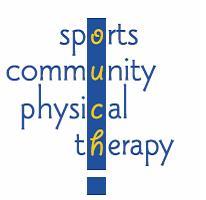Q: I have knee osteoarthritis. I'd like to do whatever I can that doesn't involve drugs or surgery for as long as possible. What do you suggest?
A: Today physicians understand and try to teach their patients that osteoarthritis is more than just a disease of wear and tear. The entire joint complex is involved. Treatment should be a program of self-management directed by a team of health care professionals.
Patient education and nonpharmacologic treatment are the first steps. The goal is to preserve and protect the joints while maintaining motion and function. It's not that medications can't be used -- they just shouldn't be the first thing patients are given. There's plenty of evidence that a nonpharmaceutical approach for osteoarthritis works well and prevents unnecessary exposure to drugs and surgery.
Today's research evidence does indeed call for a nonpharmacological approach first. Simply stated, that means "without drugs". This approach requires more time to educate the patient about the process and about his or her choices and responsibilities. There is much less focus on a magic pill to cure-all.
More and more, patients are being called upon to be proactive for themselves. They are encouraged to learn about the disease and find ways to protect their joints. But patients don't have to do this all alone. A team approach is advised with orthopedic surgeon, primary care physician, and physical and occupational therapists to offer advise, counsel, and guidance.
Some of the tools shown to make a difference include various types of joint braces, shoe inserts or shoe modifications, supportive neoprene sleeves, exercise, and weight loss. Modalities such as heat, cold, electrical stimulation, and acupuncture can be helpful during acute flare-ups. Assistive devices such as a walking stick, cane, or walker may be helpful to off-load the joint and protect the joint surface from further damage.
When medications are indicated, acetaminophen (Tylenol) is the first choice. When used as directed, it is a safe and effective pain reliever. Acetaminophen does not have any antiinflammatory effects. There is a danger of liver damage with too much acetaminophen so patients must be advised carefully and monitored closely to prevent any adverse effects from occurring.
Other medications can be used if acetaminophen in combination with the management program isn't enough to reduce pain and improve function. These include nonsteroidal antiinflammatory drugs (NSAIDs), capsaicin (topical agent rubbed on the skin to produce a counter irritant), steroid injections, hyaluronic acid injections, and glucosamine and chondroitin sulfate (supplements).
Many people like to start with good nutrition, supplementation, and exercise to manage their symptoms and delay progression of disease. Your physician can guide you in finding not only an evidence-based approach but also one that works best for you.
It may take a little bit of time to fine tune the process but the relief from pain, improved motion, and increased function will be well worth the wait.
Reference: J Chao, MD and Kenneth Kalunian, MD. Managing Osteoarthritis: A Multidisciplinary Approach. In The Journal of Musculoskeletal Medicine. October 2010. Supplement. Pp. S6-S12.
Tel. 917-287-5127
Fax. 718-282-1955
We come to you!










